Interview of Marco Schäferhoff, PhD, Managing Director at Open Consultants and co-author of the Report “Improving investments in climate change and global health: Barriers to and opportunities for synergistic funding“.
1. Could you explain what are the key questions addressed by your research “Improving investments in climate change and global health: Barriers to and opportunities for synergistic funding“?
Climate change is one of the greatest challenges to health. The connection between health and climate change is very clear but health has historically been on the margins of climate conversations. At the same time, climate has not been widely prioritised among health sectors. As such, one of the major barriers that low- and middle-income countries report, is a lack of finance for climate and health investments. We observed as well that health and climate is slipping through the cracks of very vertical and siloed financing structures. That’s why we designed our analysis.
Through this report, we looked – in a more comprehensive way – at the current landscape of climate and health finance in order to understand how all the major funders are thinking about the intersection of climate and health, the extent to which finance is being made synergistically with health, climate health goals in mind, and then what the major barriers and opportunities are for mobilising more climate – health finance and better using existing finance.
Crucially, our analysis revolves around the concept of synergistic financing. Our research started in late 2022, preceding the most recent Conference of the Parties (COP27). At that time, discussions surrounding climate and health financing were notably scarce. However, we have observed a positive shift since then, marking a potentially pivotal moment in addressing these crucial issues. We believe our report serves as a timely resource, shedding light on areas for future action and collaboration. It is our hope that this report will catalyse efforts to channel financial resources where they are most urgently needed.
2. Your analysis shows that climate funds invest very little in the health sector. What are the main gaps that you have identified?
Our study takes a comprehensive approach by examining both sides of the equation. On one hand, we delve into the global health sector’s efforts to incorporate climate adaptation and mitigation objectives. On the other hand, we scrutinise the perspectives of climate funders and their integration of health-related goals.
When focusing specifically on climate funds, we have identified significant barriers and gaps, both on a global scale and, to some extent, at the national level. But one point first, it’s crucial to highlight an interesting distinction: unlike the health sector, where major financing mechanisms like GAVI, the Global Fund, UNITAID, and others operate within tightly defined mandates, multilateral climate funds present a unique advantage. Their mandates are inherently flexible and quite broad, creating opportunities for direct investments in health.
They do not face the same constraints as the health funding mechanisms. They can invest in the health sector and this strategic approach aligns with the fact that the health sector is notably energy intensive. Consequently, these investments assume critical importance in the context of climate mitigation efforts. And then there is of course a need to make health systems more resilient. Overall, there is a need for more funding for climate adaptation. One key recommendation that we are making is that these existing flexibilities should be leveraged.
Another challenge is that there is very limited strategic emphasis on investing in health. To date, only the Green Climate Fund has recently provided guidance for the health sector. We strongly believe that there is a pressing need for these global climate mechanisms to provide comprehensive guidance on what types of projects can be funded and the appropriate funding mechanisms. In our research, we also observed a significant barrier in the form of a conspicuous absence of health organisations among the accredited entities eligible to receive funds from these mechanisms.
Another barrier is that the health sector does not benefit from investments of the multilateral climate funds, which is not surprising if you have no guidance and very few accredited organisations. As a result, and despite the needs, investments in the health sector by the climate funds are close to 0.
Finally, we notice a lack of participation of global health actors into climate related financing and policy processes. Many governments are unaware of the opportunities to seek funding for health-related interventions from institutions like the Green Climate Fund (GCF) or the Adaptation Fund. While some countries do acknowledge health in their national climate policy documents, such as Nationally Determined Contributions (NDCs), there is a significant gap in translating these intentions into actionable funding proposals and implementation.
This situation represents a missed opportunity. Additionally, while bilateral donors engage in substantial climate change projects, there remains a notable absence of dedicated funding at the intersection of health and climate.
3. In your analysis you mentioned that some donors provide significant financial and technical support for both health and climate change work and are thus well-positioned to support greater synergistic financing. Taking the example of the European Union, what kind of interventions, policies or financing schemes help health/climate synergies?
The WHO framework for climate and health could be useful and that framework essentially highlights three main approaches. The first one is to implement public health and measures that protect people from health risks of climate change. Second, it is to build low-carbon, sustainable and resilient health systems and, third, it is to promote actions across all sectors that would use climate emissions and improve health, for example, reducing air pollution through more sustainable energy systems, and improving sustainable and healthy food systems.
In these three domains, the European Union (EU) stands in a good position to increase its impact. The opportunities for the EU to simultaneously advance climate and health objectives are vast, and it’s noteworthy that these opportunities can be realised without necessitating a substantial increase in financial resources. What’s crucial is the thoughtful design of programs and initiatives.
However, while the EU’s global health strategy briefly acknowledges climate change, it falls short of fully integrating climate change’s impact on health and how to address it. On a positive note, existing funding instruments and the EU’s commitment to supporting climate change mitigation and adaptation offer a pathway for financing more health.
Another instrument to consider is the Horizon Europe program for research and innovation. Collaborative research efforts among countries can significantly contribute to the development of climate-resilient health technologies. This includes clinical trial partnerships, which play a pivotal role in strengthening healthcare services and introducing new technologies.
Lastly, beyond the financial instruments, the EU can also play a crucial role as an advocate and active participant. While the COP (Conference of the Parties) is a well-known platform, there are other coordination mechanisms. Furthermore, as a member of the G20, the EU has the opportunity to engage in meaningful discussions regarding health and climate change, as evidenced by the commitments highlighted in the G20 Health Ministers’ meetings.
In essence, there is ample room for the EU to become a leading force in addressing the critical intersection of health and climate change.



